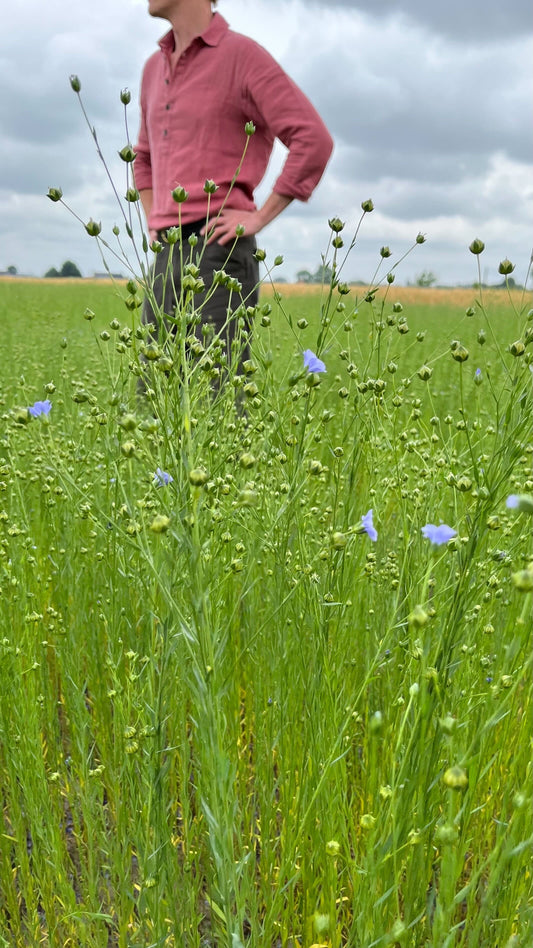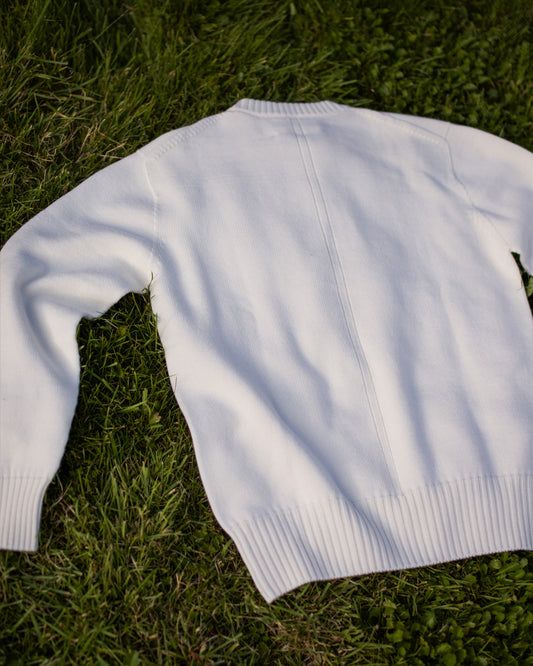Waste isn’t a sexy topic. It’s something we put a lot of energy into removing as quickly as possible. Out of sight, out of mind. A disconnect between the waste we produce and where it actually goes has fuelled a problem that’s becoming increasingly desperate. In large part, we’re victims of our own success. We have an unprecedented ability to produce at scale, at pace, and for varied tastes. As with so many things, though, just because we can doesn’t mean we should.
But here’s the thing. Consumer waste – as bad as it is – isn’t even the crux of the issue. The lion’s share of this particular catastrophe can be attributed to the production process itself. In England, it’s estimated that producers account for a staggering 91% of national waste. To take food as an example - for every kilogram of food people eat, ten kilograms of waste is generated along the food chain.
The fashion industry’s waste-to-product ratios are equally unflattering. But it’s hard to figure out exactly where the culpability lies. Should the onus be on consumers to demand better products, or should brands hold themselves more accountable and take the lead? It’s probably unimportant and a waste of time to find a specific outlet for our scorn. We can chicken-and-eggdebate our way to nowhere or we can figure out the best way to overturn the wasteful status quo.
It can and needs to be driven by producers, brands and consumers alike.
That starts by identifying the source of the issue as it stands. It begins with a knowledge gap between consumers and brands and is reinforced by another between brands and producers. Consumers don’t know much, if anything at all, about the provenance of the products they buy. Brands turn a wilful blind eye to the finer details of how things are produced, happy to pay low prices and move on rather than scrutinise too intricately. Disconnect by design. And this isn’t yesterday’s problem. Just last year, global juggernauts including Uniqlo, Adidas, Nike, and H&M were reportedly using cotton produced by forced labour in Xinjiang province China. What are we to make of the fact brands making £1.12B, £8.3B, £11.6B, and £239m gross annual profits respectively, are still – by choice or by ignorance - involved in these practices?
Okay, Mr Doomsayer. So, what can we do about it? As consumers, we can all choose brands that are aware of what’s happening along their supply chains, happy to share it and conscientious about making sure things are as feasibly low impact as they can be. There are too many variables to discuss in depth here, but a good starting point is an analysis of the materials used. To take linen as a convenient but demonstrative example, we can go right back to the fabric’s natural origins. It comes from the flax plant, which is wonderful in many ways, but in this context it’s particularly great because it’s a zero-waste crop.
When it’s grown in northwest Europe – as 85% of the world’s output is – flax produces no waste. From animal fodder and paper to linseed oil and highquality yarns, every part of the plant ends up being used. The applications of the plant beyond just yarn help make flax one of the world’s lowest impact clothing crops.
The plant’s woody stem is well suited to animal bedding. Its Omega-3 rich seeds are a healthy dietary supplement for humans and animals. Linseed oil - obtained from the dried, ripened seeds of the plant - is used as wood varnish, a pigment binder in oil paints, and a key ingredient in linoleum. Even the shearing dust collected from factory floors can be used in paper production.
They say the devil is in the detail. It’s no accident that flax’s scientific name – linum usitatissimum – translates as ‘most useful flax’. The multi-faceted applications of its component parts have been in circulation for thousands of years. On top of this, the flax plant is drastically less thirsty for herbicides and pesticides than other clothing crops like cotton. The Environmental Justice Foundation reports that while cotton accounts for 2.5% of the world’s cultivated land, it represents a staggering 16% of total insecticide usage. If linen is so good, then why has its usage dropped so much in recent decades? There were two million hectares of land being cultivated for flax in 1961, a number which had dropped to 450,000 hectares by 2000. We shouldn’t be surprised that linen’s shrinking volumes coincided with the more general trends towards cheap, fast, mass produced materials. Linen, by its nature, is manually intensive to produce. When environmental considerations are eclipsed by a gluttony for profit margins, time consuming stages of the supply chain disappear.
But we’ve turned a corner. By necessity, the provenance of materials we use has become a factor in what we buy. It’s not ubiquitous by any stretch, but consumers are becoming increasingly conscientious. With that shift in consumer mindsets towards buying better things less often, linen has seen a resurgence in recent years. Particularly in Europe, where cultivation, production, and manufacturing can all be done in close quarters. Smaller, less impactful supply chains that create items worth repairing. That’s the order of the day. CM





